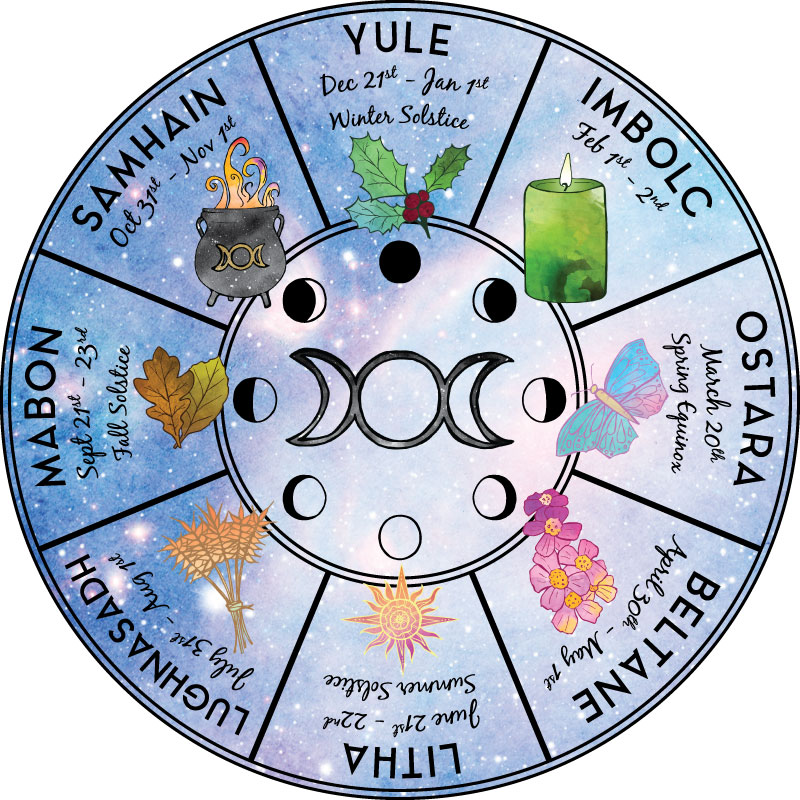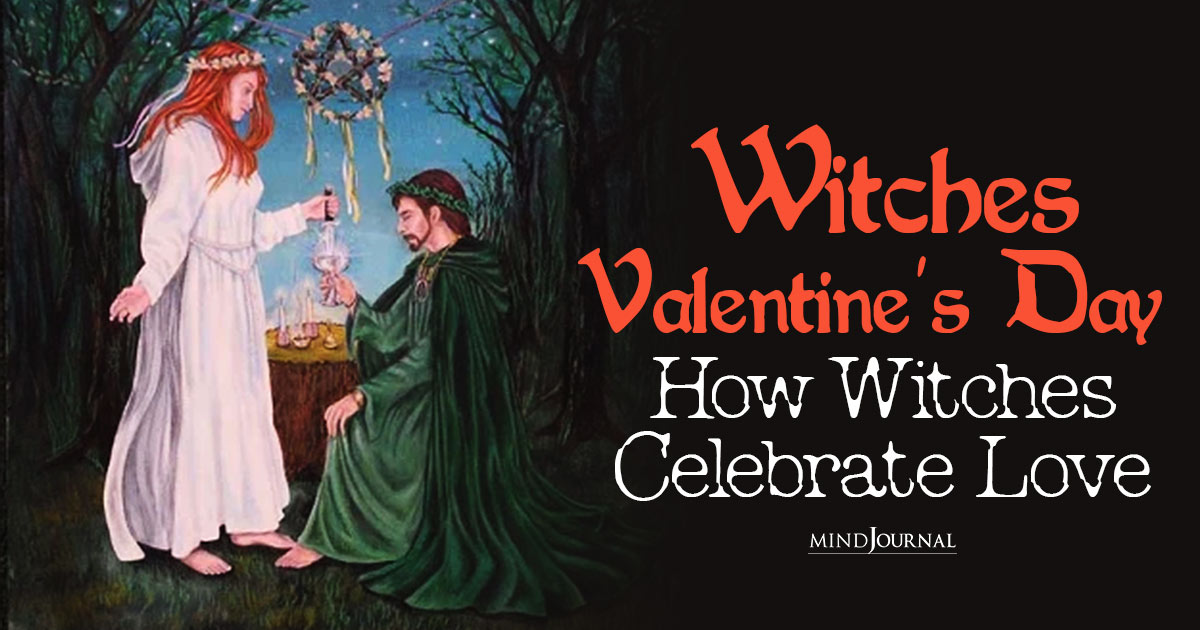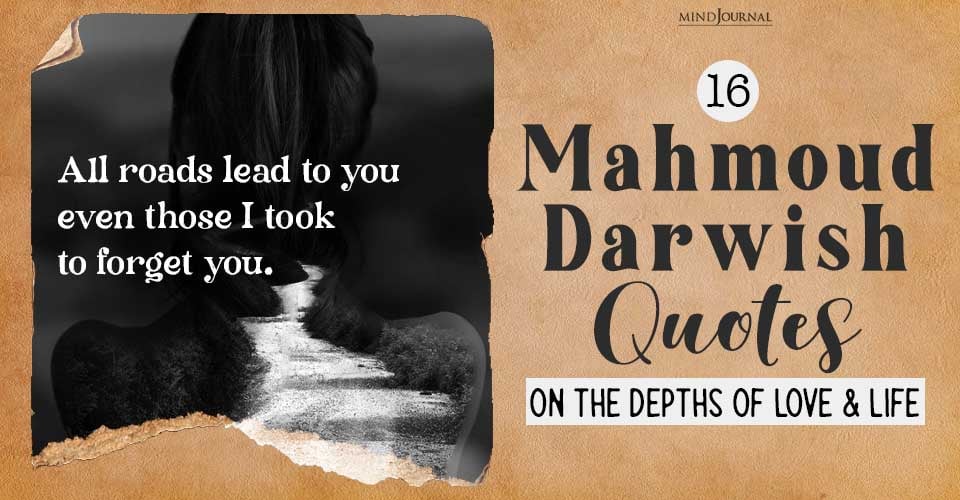So, you think celebrating a day dedicated to love is so passé? Taking a look at the Witches’ Valentine’s Day, however, will show you what celebrating love really means!
Across the globe, people’s hearts have been captured by Valentine’s Day, a celebration steeped in romance and affection.
However, amidst the sea of red roses, heart-shaped chocolates, and poetic love letters there is a lesser-known tradition that interweaves magic with love called The Witches’ Valentine’s Day.
This fascinating observance of Witchy Valentine’s Day offers a unique perspective on love, magic, and sacred union, delving deep into the ancient roots of Paganism and Witchcraft and the celebration of the power of nature and mysticism.
Pagan History Of Valentine’s Day
The Witches’ Valentine’s Day or the Pagan Valentine’s Day, also known as “Lovers’ Sabbat” is traced back to ancient Pagan traditions that constituted the esoteric practices of the Old World Witchcraft.
While conventional Valentine’s Day has become what it is through Christian and commercial influences, the Witches’ Valentine’s Day is deeply rooted in the cycles of nature, the phases of the moon, and the elemental forces that govern the earth and the cosmos.
Pagan festivals and rituals often revolve around seasons, nature cycles, and the balance of the divine masculine and feminine.
Among these, several festivals specifically honor themes of love, fertility, and the sacred union of the divine forces, and therefore uphold the flavor of Pagan Valentine’s Day.
In these ancient traditions, Witches, Pagans, and practitioners of the old ways would use this special time to honor the divine feminine and masculine energies, their sacred union, and the balance within and without.
So, what are these festivals and traditions that bear the roots of Witchy Valentine’s Day? Come, let’s take a look with us!
Read 8 Ancient Pagan Practices That You Still Do Unknowingly!
4 Pagan Festivals That Are Observed As Witches’ Valentine’s Day
Here are four ancient Pagan traditions that have celebrated love and holy communion since the dawn of time:
1. Imbolc: The Promise Of Fertility (Popularly Celebrated On February 1st)
Celebrated at the beginning of February (1st or 2nd), Imbolc announces the arrival of Spring linking itself intimately with the Brigid goddess who personifies purity, renewal, and fertility.
It reminds us that this period is a time of regeneration with the earth awakening and the first hint of spring.
The candles and fires are lit to symbolize returning light and warmth to ignite the latent life force within the Earth thereby making it ready for union and productivity.
This festival is a quiet recognition of the maiden age of the divine feminine, the potential for new beginnings (fertility) along waiting for divine masculine energy to rejuvenate.
2. Beltane: The Sacred Union (Popularly Celebrated On May 1st)
Beltane, celebrated on May 1st is perhaps the most direct celebration of divine union, marking the summer’s beginning. Beltane is a festival of fire, fertility, and the harmonious balance between the divine masculine and feminine energies.
The maypole, a central symbol of the festivities, represents the phallus whereas ribbons and the earth where it stands represent the feminine.
Dancers weave the ribbons together representing the union of the divine masculine and feminine, a metaphor for the fertility and creativity that sustains life.
In addition, by jumping over Beltane fires couples sought fertility as well as protection/purification that would ensure their love/passion.
3. Litha (Summer Solstice): Celebrating Light and Abundance
The Summer Solstice, or Litha, celebrates the peak of the Sun’s power, on the longest day of the year when the divine masculine is at its strongest.
The Sun, as the embodiment of the divine masculine, is honored for its life-giving energy, which, in union with the Earth, the divine feminine, nurtures the crops and ensures the abundance of life.
The celebration of Litha is a recognition of the balance and harmony between the masculine and feminine forces, where the abundance and fertility of the Earth are at their peak.
Rituals often include bonfires, feasting, and merry-making, reflecting the fullness and richness of life brought forth by this sacred union.
4. Lupercalia: Rituals of Purification and Fertility
Do you know what is Lupercalia? Although it is not one of the eight festivals on the modern pagan Wheel of the Year, it echoes some themes found in these traditions.

This ancient Roman festival which was held in mid-February was a time of purification and fertility. The festival of Lupercalia involved animal sacrifices and rituals to cleanse the city and ensure health and fertility for both people and their crops and livestock.
The priests or Luperci were believed to have made women more fertile by striking them gently with strips from goats they had just sacrificed, and it often was a voluntary thing.
This tradition was an untamed, uncontrolled expression of life force that ensured the survival and prosperity of society through interaction between the godly feminine and masculine.
Matchmaking by lottery was an integral part of this festival. How to celebrate Lupercalia in modern times, you ask? We do celebrate it, just that we call it online dating nowadays!
How To Celebrate Pagan Valentine’s Day: Celebrating Love Through Ritual and Magic
If you wish to observe the Witches’ Valentine’s Day during any of these above-mentioned festivals, remember to mark the day with rituals and ceremonies that aim to harness the potent energies of love, healing, and protection.
- These rituals often involve casting circles, calling upon the elements, and invoking deities associated with love and fertility, such as Aphrodite, Brigid, Freya, or Eros.
- The goal is to create a sacred space where the boundaries between the physical and spiritual worlds blur, allowing for a deeper communion with the forces of love.
- One of the hallmark practices is the crafting of love talismans or amulets. These enchanted objects are imbued with specific intentions, whether to attract love, strengthen an existing relationship, or promote self-love and inner harmony.
- Ingredients might include rose quartz, known for its properties of unconditional love, or herbs like rosemary and lavender, which are associated with protection and purification.
- Another key aspect of the celebration is the love feast, a communal gathering where witches and their kin share in a meal that is both a physical and spiritual nourishment.
- The dishes are carefully chosen for their symbolic meanings and magical properties, incorporating ingredients like apples, which are associated with love and knowledge, and chocolate, known for its ability to open the heart and uplift the spirit.
Read 8 Pagan Holidays And Traditions To Beat Your Post-Christmas Blues
Celebrating Divine Energies, Sacred Union, And Fertility Much Before They Became A Sin
These festivals, with their rich tapestry of customs and symbolism, celebrate the cyclical nature of life and the essential balance between the divine masculine and feminine.
The pagan history of Valentine’s Day honors the Sacred Feminine, the different aspects, and stages of life, from the promise of new beginnings and potential fertility to the manifestation of union.
Through rituals, storytelling, and communal celebrations, these festivals carry the theme of the Witches’ Valentine’s Day and offer a space to reflect on the interconnectedness of all life and the sacred dance between the masculine and feminine energies that create and sustain the universe.
Frequently Asked Questions
Is there a Pagan Valentine’s Day?
Valentine’s Day is often linked to Lupercalia, a fertility rite performed in ancient Rome during mid-February. However, there are many other Pagan festivals that uphold the concept of divine union like Beltane, Litha (Summer Solstice), etc.
What is the real story of Valentine’s Day?
According to one story, St. Valentine was a clergyman who was executed for opposing a Roman law that prohibited soldiers from getting married. However, NPR reports that Emperor Claudius II of Rome ordered the execution of two men, both named Valentine, on February 14th in separate years during the third century, for reasons not known.
Who invented Valentine’s Day?
In the late 5th century, Pope Gelasius proclaimed February 14 as St. Valentine’s Day, marking it as a day of festivity from that point onward, although the celebrations were initially more religious than romantic in nature.










Leave a Reply